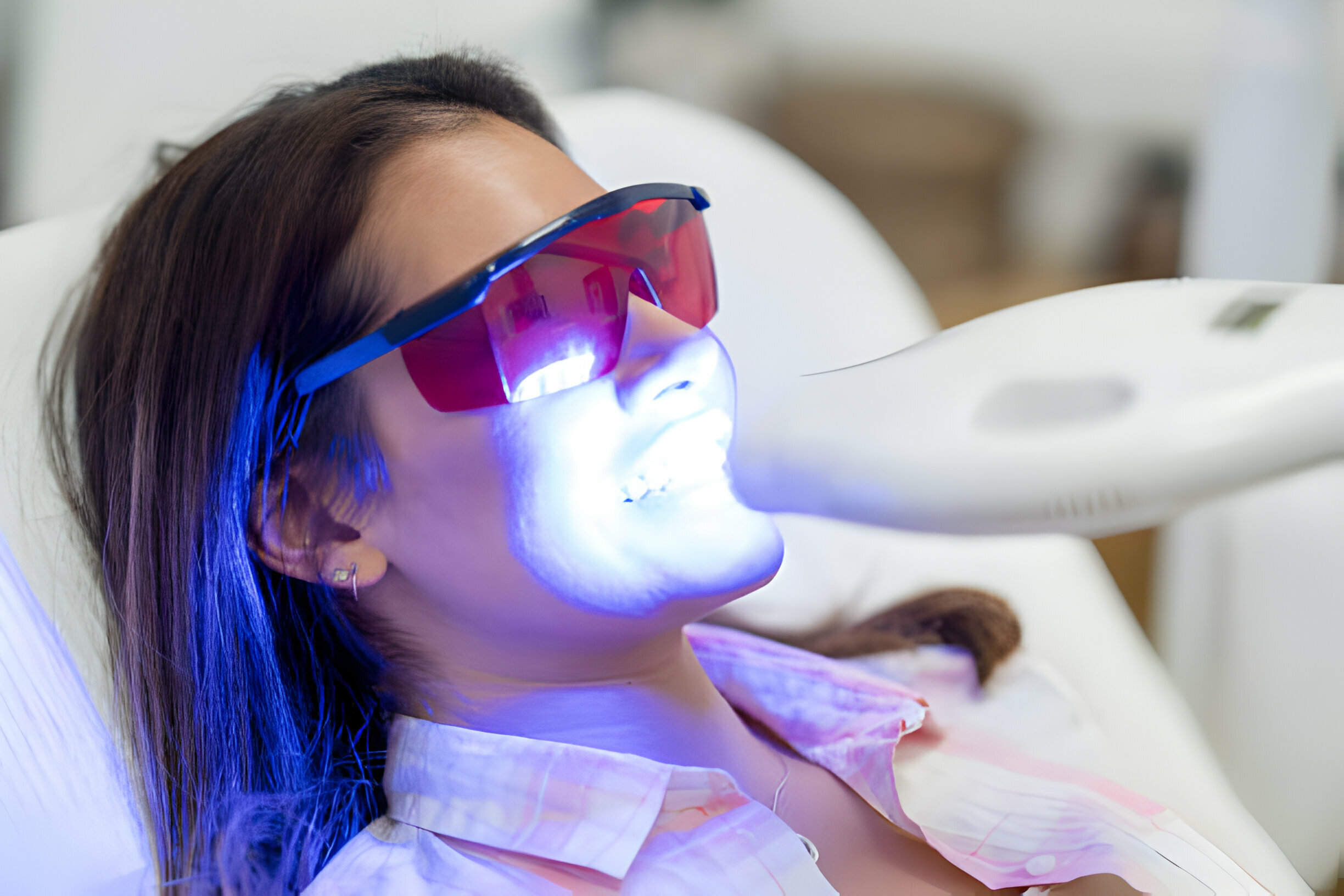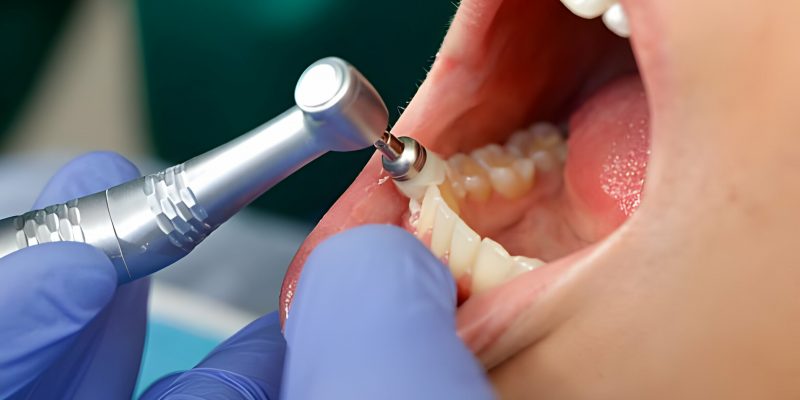Summary:
Cleaning your teeth regularly and maintaining proper oral hygiene is a must for every individual. However, despite our cleanliness and habits, there are times when you need to undergo dental cleanings for deep cleansing.
This is important because dental cleaning treatment allows you to identify underlying issues. It allows your healthcare professionals to understand your condition and take the right steps to fix your oral health.

But have you ever wondered what happens during the treatment and how long the procedure lasts?
Relax, you’re not alone! A majority of individuals visiting our clinic have a similar question in mind. Considering their questions and our research around the topic, this blog explores more about dental cleanings.
In the following sections, we understand more about:
- How Long Do Oral Cleanings Last?
- What Happens During The Dental Cleaning – Step-by-Step Procedure Explained!
- How Long Does Teeth Cleaning Stay Effective?
Continue reading as we understand how long dental cleanings last and what happens in the procedure in the following sections.
How Long Do Oral Cleanings Last?
It is common to have questions like, “How long does it take for teeth cleaning?” especially when you are anxious. The duration of a dental cleaning varies depending on factors such as the individual’s oral health and any specific issues they may have. Generally, a standard oral cleaning appointment can last 30 minutes to an hour.
However, the appointment may take longer if you require additional treatments, such as deep cleaning or addressing extensive plaque buildup. Dentists in San Antonio, TX, and dental hygienists aim to provide thorough cleanings tailored to each patient’s needs, promoting optimal oral health. Regular check-ups and cleanings every six months are recommended to maintain healthy teeth and gums.
What Happens During The Dental Cleaning – Step-by-Step Procedure Explained!
Stage 1. Initial Examination
Before the cleaning begins, a dental hygienist will start cleaning at dentist’s with an initial examination. This step is crucial as it allows them to assess the overall health of your mouth, teeth, and gums.
During the examination, they will visually inspect your mouth, looking for any visible signs of oral issues such as cavities, gum disease, or oral abnormalities. They may also use tools like mirrors and probes to check for areas of concern, such as tooth decay or pockets of infection around the gums.
Additionally, they might take X-rays to get a more detailed view of the teeth and underlying structures. This initial examination sets the stage for the rest of the teeth-cleaning process by providing valuable information about your oral health status.
Stage 2. Plaque and Tartar Removal
Plaque and tartar buildup are common problems that can lead to oral issues if left untreated. Tartar is a hardened form of plaque that cannot be eliminated with routine brushing and flossing, whereas plaque is a sticky film of bacteria that builds up on your teeth during the day.
To remove plaque and tartar, your dental hygienist will use special tools called scalers. These tools come in various shapes and sizes, which can effectively remove plaque and tartar from the surfaces of your teeth.
The hygienist will carefully scrape away the buildup, paying close attention to areas where plaque and tartar tend to accumulate, such as along the gum line and between teeth. This process, known as scaling, is essential for maintaining good oral hygiene and preventing tooth decay and gum disease.

Stage 3. Scaling
Scaling is a crucial step in basic dental cleaning that involves removing plaque and tartar from the teeth and along the gumline. It comprises two primary methods, namely manual scaling and ultrasonic scaling.
Manual scaling involves the hygienist using handheld equipment known as scalers to remove plaque and tartar from the tooth surfaces meticulously. Ultrasonic scaling, on the other hand, employs a vibrating scaler tip that generates ultrasonic vibrations to break up and remove plaque and tartar.
The choice of scaling method depends on factors such as the amount of buildup present and the patient’s comfort level. Regardless of the technique, scaling is essential for maintaining healthy teeth and gums and preventing oral problems.
Stage 4. Polishing
Once the hygienist cleaning has removed the plaque and tartar, polishing is the next step in the cleaning process. Polishing helps to smooth the surfaces of the teeth and remove any residual plaque or stains, leaving the teeth looking clean and shiny.
To polish the teeth, the dental hygienist will use a special tool called a prophy cup, which is attached to a handpiece and filled with a gritty toothpaste-like substance called prophy paste.
The prophy cup is then rotated against the surfaces of the teeth to buff away plaque and stains. This process improves the teeth’ appearance and helps remove any remaining bacteria, making the teeth feel smooth and refreshed.
Stage 5. Fluoride Treatment
Following the polishing step, some dental cleanings may include a fluoride treatment. Fluoride is a mineral that helps to strengthen the enamel, the outer layer of the teeth, and protect against tooth decay.
During a fluoride treatment, varnish, fluoride gel, or foam is applied to the teeth and left on for a few minutes. The fluoride is absorbed into the enamel, making it more resistant to acid attacks from bacteria and acids in the mouth.
This helps to prevent cavities and keep the teeth strong and healthy. Those who are more susceptible to cavities, such as youngsters, older people, and people with specific medical issues, benefit most from fluoride treatments.
Stage 6. Final Examination
Once the cleaning process is complete, your dentist or oral hygienist will examine your teeth and gums. This examination allows them to evaluate the effectiveness of the cleaning and ensure that your oral health is in good condition. They will check for any remaining plaque or tartar and signs of gum disease, tooth decay, or other dental issues.
If any problems are detected, they will discuss them with you and recommend appropriate treatment options. They may also guide proper oral hygiene practices and schedule your next regular cleaning teeth appointment. Your dentist or dental hygienist can help you maintain a healthy smile and prevent future dental problems by conducting a thorough final examination.
How Long Does Teeth Cleaning Stay Effective?

The effectiveness of teeth cleaning can vary depending on personal oral care habits and diet. Generally, professional cleanings help maintain oral health for around six months to a year, but maintaining good habits like daily brushing, flossing, and regular dental check-ups is essential for long-term dental health.
How Often Should You Go For Dental Cleanings?
Dentists usually recommend regular dental cleaning treatment every six months for most individuals. However, the frequency may vary depending on oral health status, dental issues, and individual risk factors for oral diseases. Your dentist may suggest more frequent cleanings if you have a history of gum disease, cavities, or other dental concerns.
Takeaway
- Dental cleanings typically last 30 minutes to an hour, depending on individual needs.
- An initial examination assesses oral health before cleaning, including visual inspection and possibly X-rays.
- Scaling methods include manual scraping and ultrasonic vibration, chosen based on patient comfort and buildup.
- Polishing smoothens tooth surfaces and removes stains for improved appearance and bacterial removal.
- Dentists suggest regular cleanings every six months for optimal oral health, but frequency may vary based on individual needs.
- Still, have questions about the treatment or the procedure? Feel free to connect with our experts at Heritage Dental & Orthodontics.

